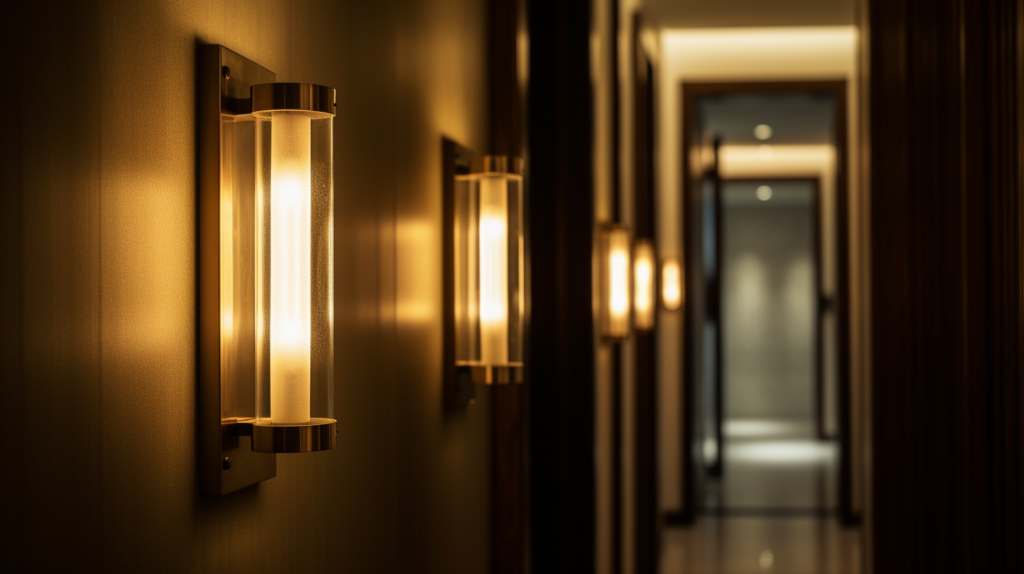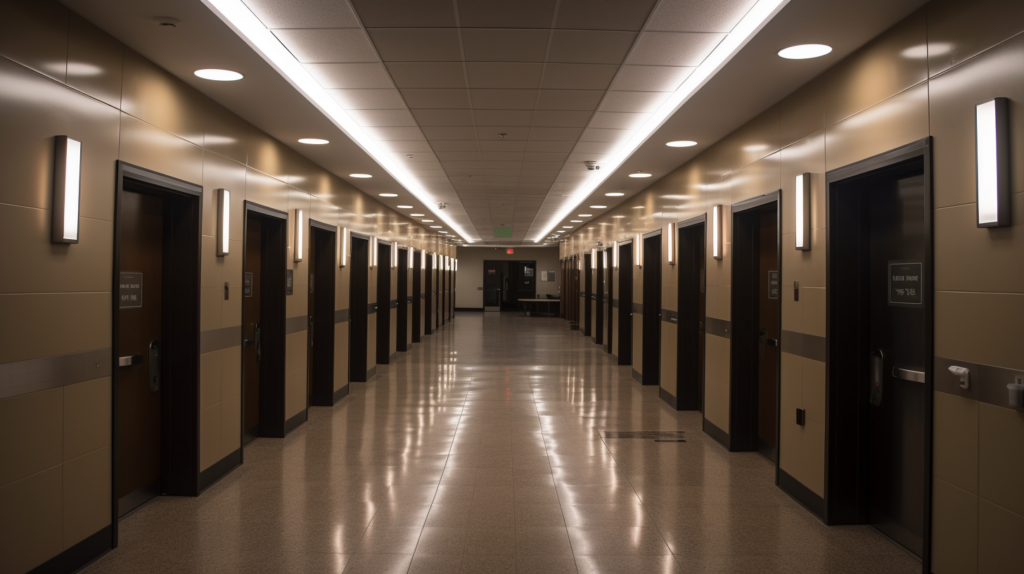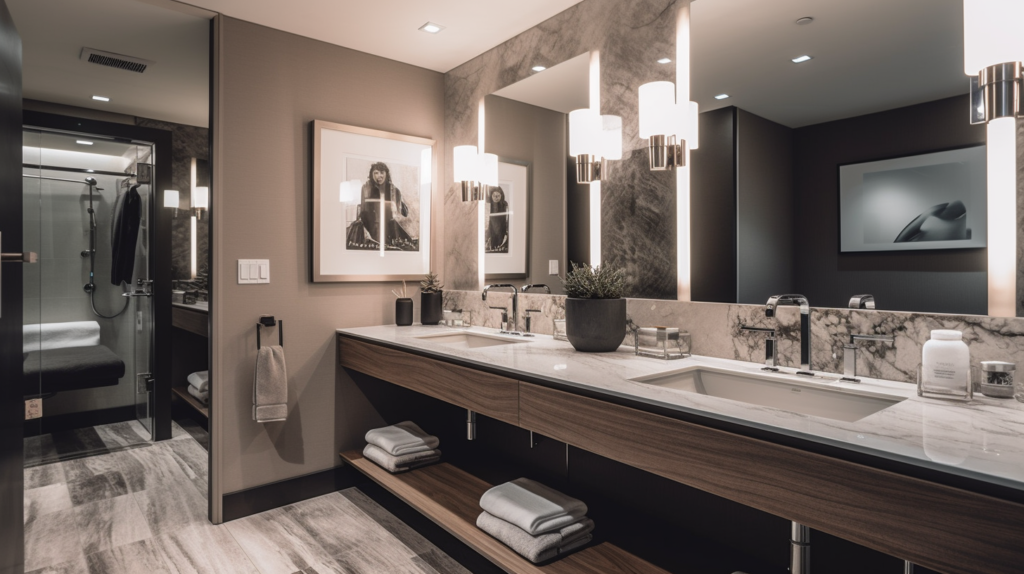ADA Lighting Requirements Guide April 19, 2023 – Posted in: Hospitality Lighting, Commercial Lighting, Lighting Information

Table of Contents
What is ADA Compliance?
ADA compliance refers to the standards established by the Americans with Disabilities Act (ADA) to assure equal access to public places, goods, and services for people with disabilities. To prevent people with disabilities from being treated unequally in any way throughout the design process of a building, these standards cover a wide range of factors, including the lighting.

What are the ADA lighting requirements?
The ADA specifies illumination rules for areas such as walkways, parking lots, and restrooms to ensure that people with disabilities have safe and accessible access. Some of the important ADA lighting criteria are as follows:
- Lighting should be bright enough to illuminate walkways, stairs, and ramps while not being so bright that it causes glare.
- Lighting fixtures should be positioned in such a way that they do not impede the movement of people who have disabilities.
- Light switches and other controls should be positioned so that people using wheelchairs can easily access them.
- In the event of a power loss, emergency lighting should be provided.
- Lighting should be installed to prevent shadows and dark spots that could make it difficult for individuals with visual impairments to navigate.

What makes a wall sconce ADA compliant?
Sconces are wall-mounted lighting fixtures that are typically used in corridors, bathrooms, and other public locations. To be ADA compliant, sconces must meet the following criteria:
- When placed, the sconce should not protrude more than 4 inches from the wall.
- The bottom of the sconce should be at least 80 inches from the ground to avoid impeding the movement of people with impairments.
- The light source should be protected to avoid glare and to guide light downwards.
What does ADA compliant mean for lighting?
To be ADA compliant, lighting must meet the precise requirements established by the ADA to enable safe and accessible access for people with disabilities. Positioning and installation of ADA-compliant lighting fixtures and controls must allow for unimpeded movement for people with impairments, including those using wheelchairs. Lighting should also be bright enough to enable safe navigation but not so bright that it causes glare or discomfort.
Height requirements for ADA mounting
Mounting heights are critical for making lighting fixtures and controls accessible to people with impairments. ADA mounting height standards include the following:
- Light switches and other controls should be mounted no higher than 48 inches off the ground and no lower than 15 inches off the ground.
- Grab bars should be installed 33 to 36 inches above the floor.
- Drinking fountains should not be installed higher than 36 inches off the ground.

What are the ADA vanity requirements?
Vanities provide a space for individuals to perform essential tasks such as washing their hands or freshening up. But, those with impairments may have trouble using a vanity that wasn’t built with their requirements in mind. Vanity design and location in public restrooms are subject to a number of ADA regulations meant to promote accessibility for all users.
ADA vanity requirements
Vanities are an essential component of restrooms, and ADA requirements for vanities include the following:
- The vanity counter should not be higher than 34 inches off the floor.
- The vanity should have an open space of at least 27 inches high, 30 inches wide, and 19 inches deep for individuals in wheelchairs to approach.
- The vanity should have knee clearance of at least 27 inches high, 30 inches wide, and 11 to 25 inches deep for individuals in wheelchairs to use the sink.
Frequently Asked Questions
Do all lighting fixtures need to be ADA compliant?
No, not all light fixtures must be ADA compliant. The ADA standards set by the act only apply to lighting in areas where people with disabilities can access such as sidewalks, parking lots, and restrooms. For hotels, this basically covers most of the building. We recommend incorporating ADA guidelines into all parts of your lighting design to be able to accomidate people with disabilities in all areas.
Why is ADA compliance important for lighting design?
ADA compliance is essential for your building or business in order to avoid lawsuits and financial responsibility for breaking the guidelines set by the Americans with Disabilities Act of 1990.
Are there any specific lighting requirements for outdoor spaces?
Yes, the ADA specifies outside lighting requirements to satisfy certain specifications in order to promote safe and accessible navigation for people with disabilities. For example, lighting fixtures on sidewalks must be positioned no more than 30 feet apart and a minimum height of 24 inches to ensure visibility for those with visual impairments.
I have been the project manager for Modern.Place since early 2016, spending three of those years working overseas on the manufacturing & procurement side of the LED lighting industry. Constantly learning and passing on knowledge to others while excited for what the lighting industry will involve into next.

